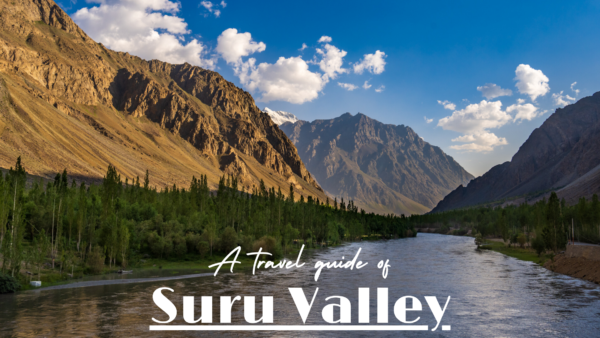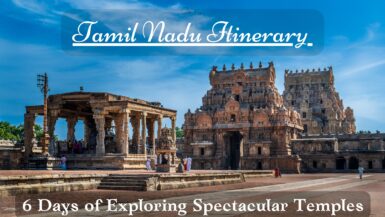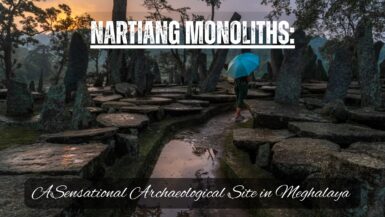The otherwise monochromatic landscape of Ladakh is poradically dotted with a few river valleys. These green valleys stand out against the cold desert landscape of Ladakh, like an oasis in the Thar. Among the handful of river valleys of Ladakh, the Suru Valley stands out for its pristine scenery. By mostly remaining outside the radar of travelers, Suru continues to be one of the best-kept secrets of Ladakh. Unknown and untouched, it is characterized by lush greenery and breathtaking vistas. Additionally, the Suru Valley is a haven for mountaineers, trekkers and campers.
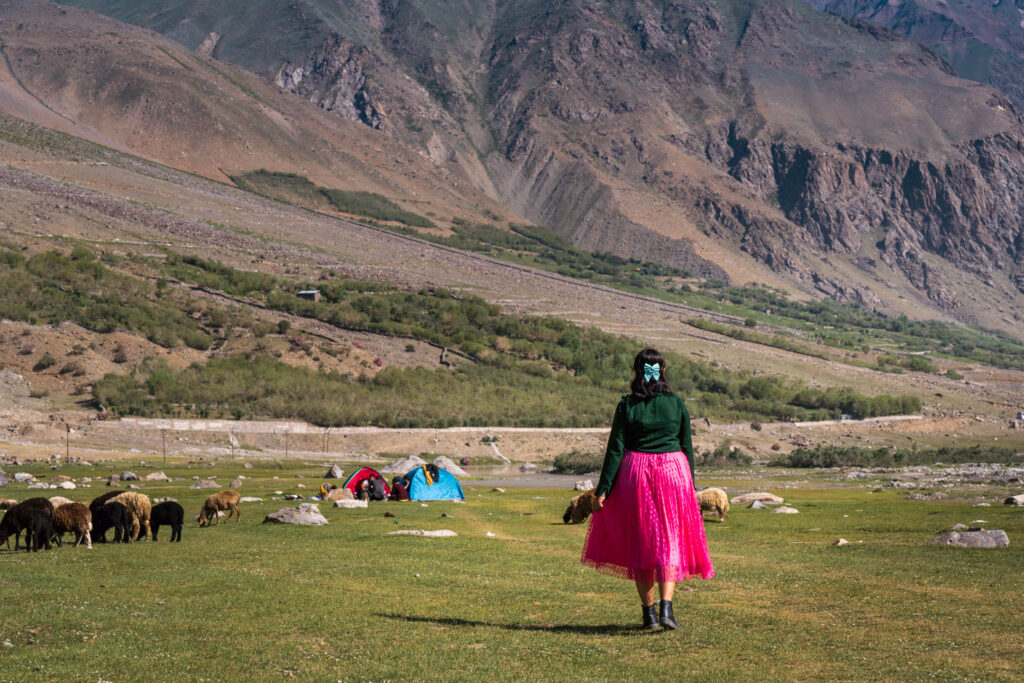
Table of Contents
Where is Suru Valley located:
The Suru Valley is located in Kargil district of Ladakh. It lies in the western part of Ladakh.
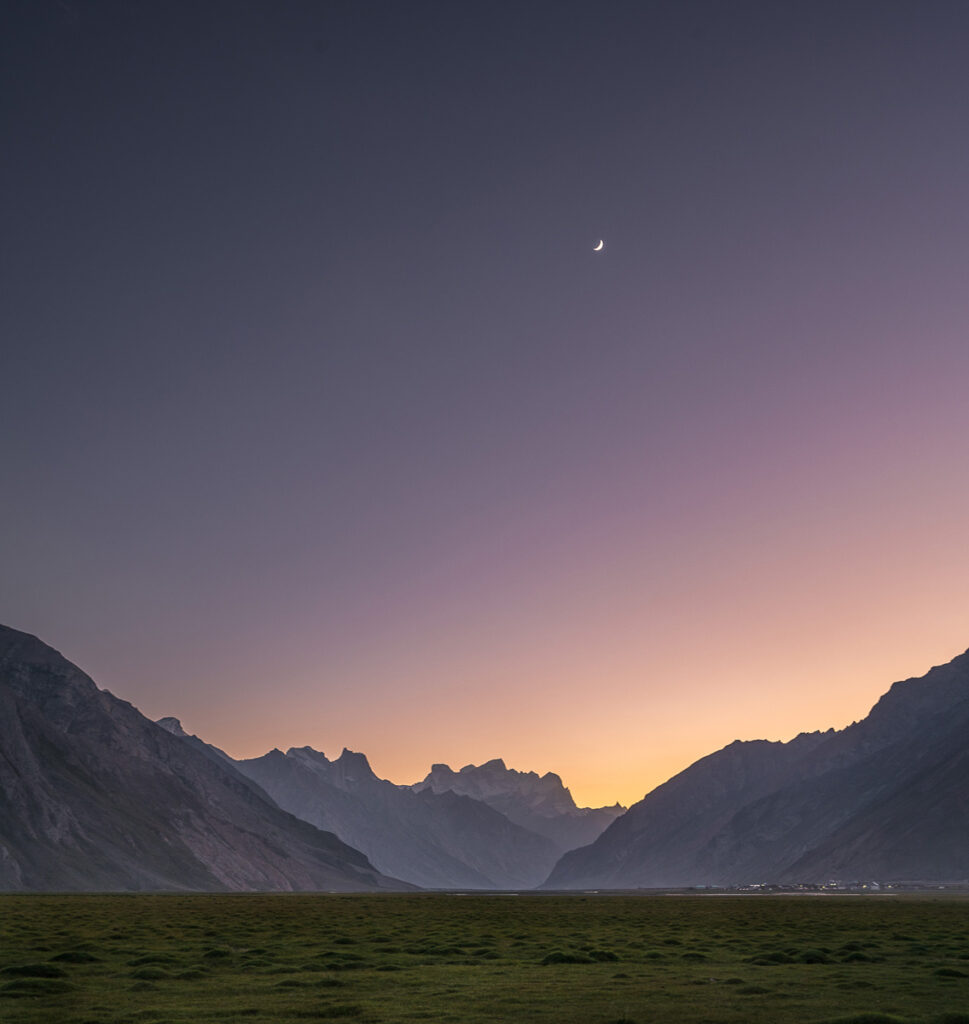
About Suru Valley:
Suru Valley derives its name from the Suru River, a tributary of the Indus. As its name suggests, the valley is nourished by the ice-melt waters of the Suru. This valley, located at an average height of about 3,000 meters, geographically separates Kargil from the Zanskar Valley. The Suru Valley begins from Kargil and continues all the way up to Pensi La, from where the Zanskar Valley starts.
The Suru Valley is sparsely populated, with just 25,000 inhabitants. The residents here belong of Dard and Tibetan descent.
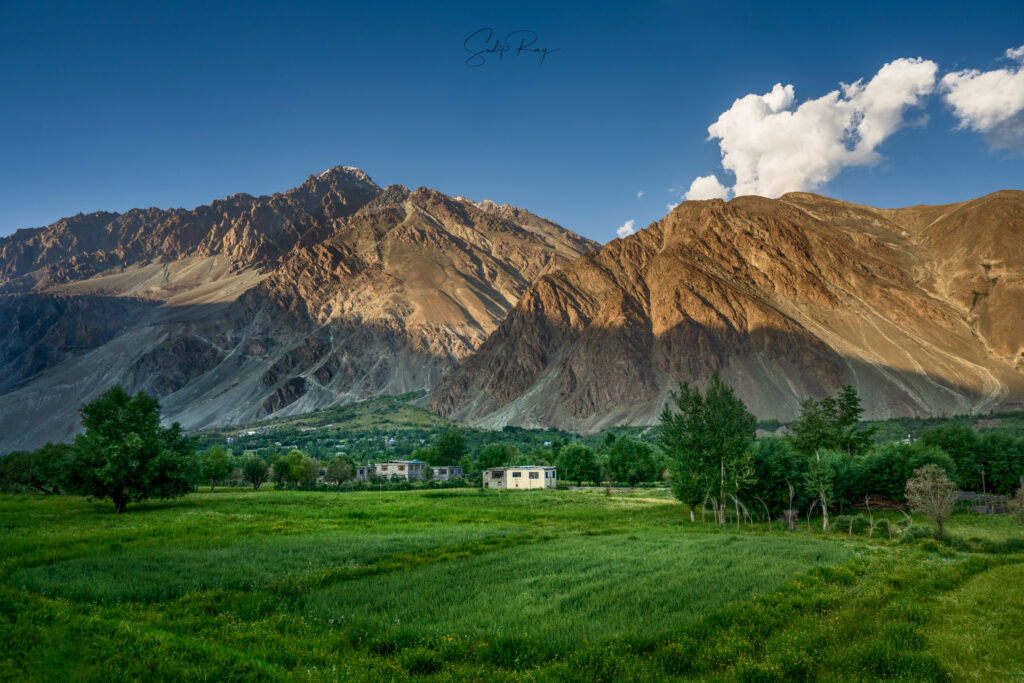
Why you need to visit Suru Valley:
Travelers generally tend to overlook Suru Valley on their way to Zanskar. However, Suru Valley is worth exploring for a day or two.

Thanks to the Suru river, this valley is one of the most fertile places in Ladakh. Almost every house here grows barley and various vegetables in their gardens. It is also one of the greenest areas in entire Ladakh. The roads in Suru Valley are lined with willow and poplar trees. You will also come across bushes of wild roses, peonies, and other colorful flowers. If you are heading towards Zanskar Valley, enjoy these views of the lush meadows of Suru Valley. You won’t be seeing greenery for a long time as Zanskar is mostly barren.
In contrast, the upper reaches of the Suru Valley are rugged, predominated by snow-capped mountains, colossal glaciers, and glassy lakes.
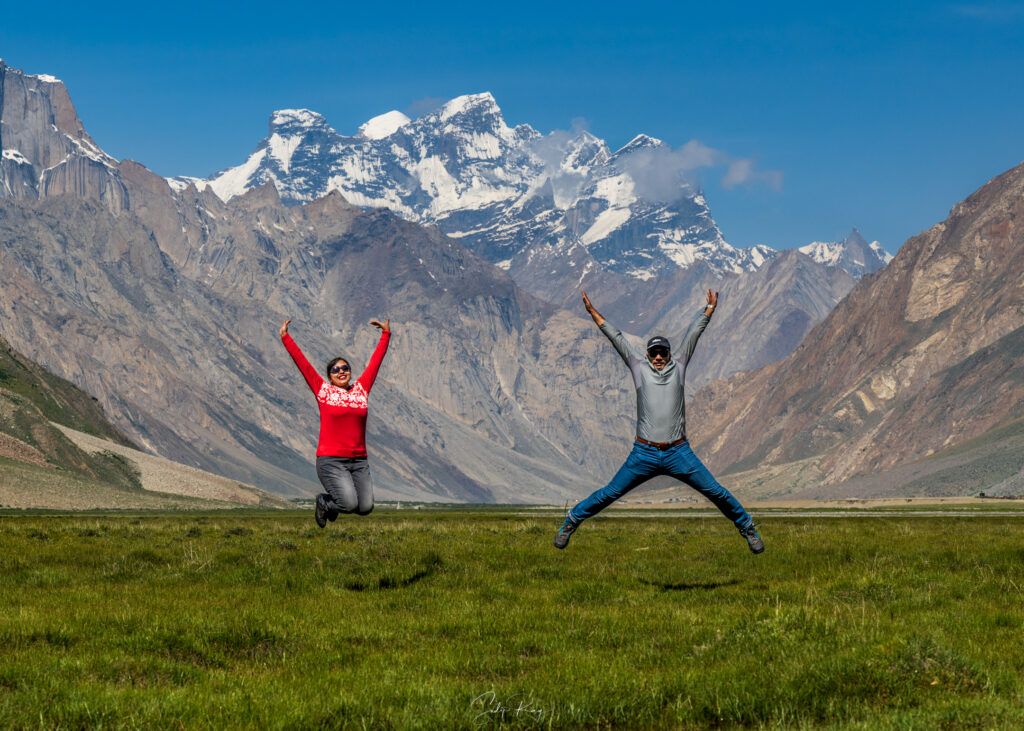
What is the best time to visit Suru Valley:
The summer months (from June to September) are best for exploring the verdant vale of Suru. If you want to relish the fall colors, you can visit in the first week of October. Winter generally sets on from the last week of October and continues till March. The valley experiences heavy snowfall and the weather remains harsh.
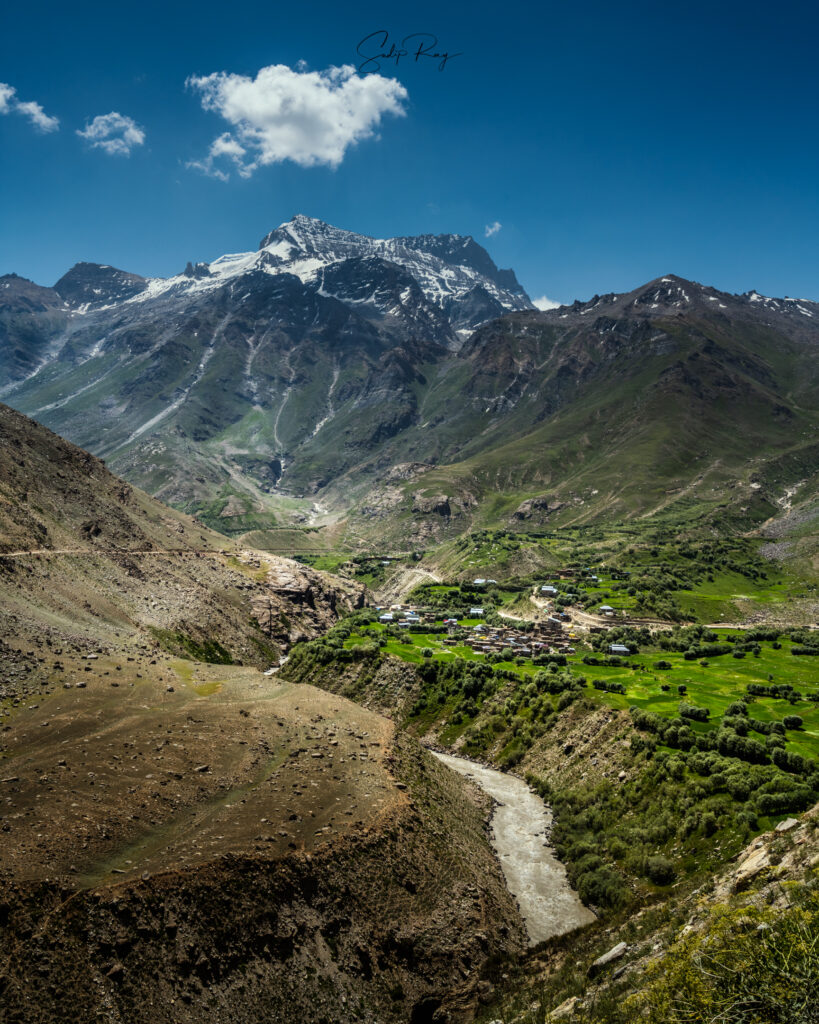
How to reach Suru Valley:
- By air: The nearest airports are Leh (275 km) and Srinagar (285 km). After landing, you can reach Kargil by road.
- By train: Jammu Tawi (500 km from Kargil) is the nearest railway station.
- By road: Daily bus services to Kargil from both Leh and Srinagar are available. Further, a daily bus service is available from Kargil to Sankoo, Panikhar, and Parkachik.
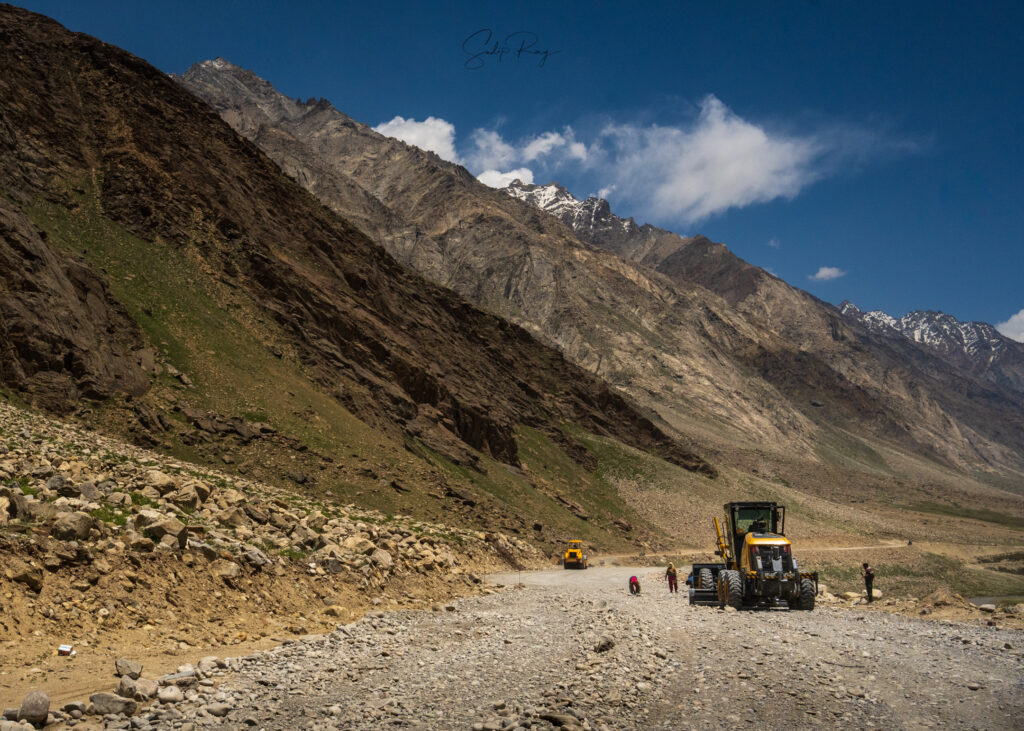
The other mode of public transport is shared taxis. This is far more reliable than the buses and the local people also seemed to prefer this. You will get shared taxis from Leh to Kargil and vice versa. Further, shared taxis from Kargil to the villages of Sankoo, Panikhar, Parkachik, and Rangdum are also available. We suggest enquiring about the timings and fares beforehand and booking seats, if possible.
Or you can hire a car or drive your own car to Suru Valley. You can either choose Srinagar – Kargil – Suru route or Manali – Leh – Kargil – Suru road.
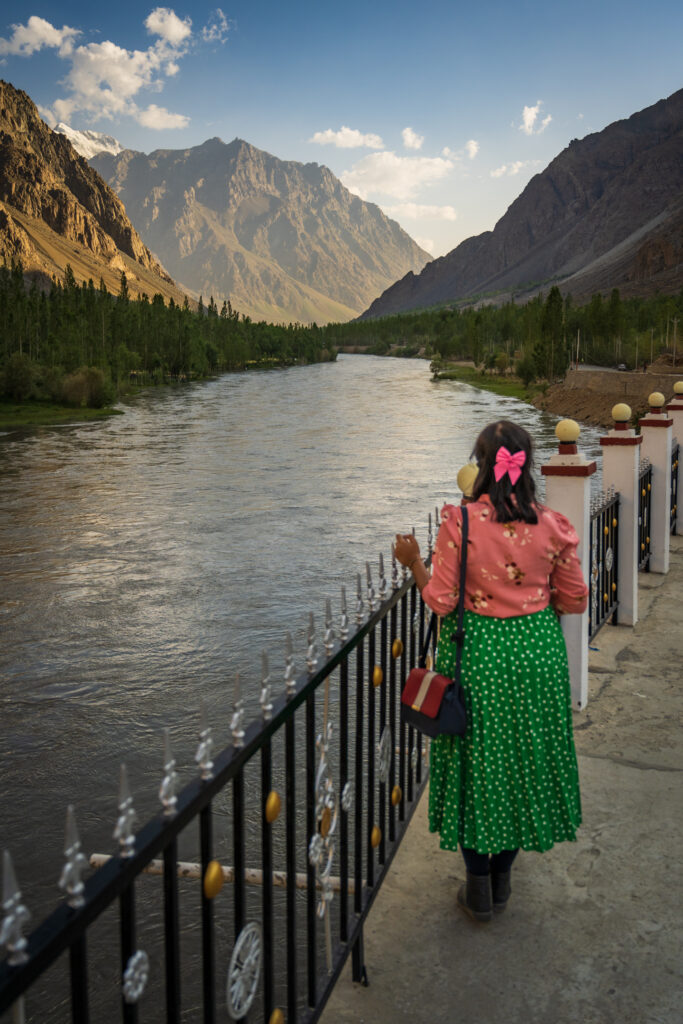
Distance charts of important places:
- Leh to Kargil – 216 km
- Kargil to Sankoo – 40 km
- Sankoo to Damsna – 20 km
- Damsna to Panikhar – 4.5 km
- Panikhar to Parkachik – 16 km
- Parkachik to Rangdum – 46 km
- Rangdum to Pensi La – 26 km
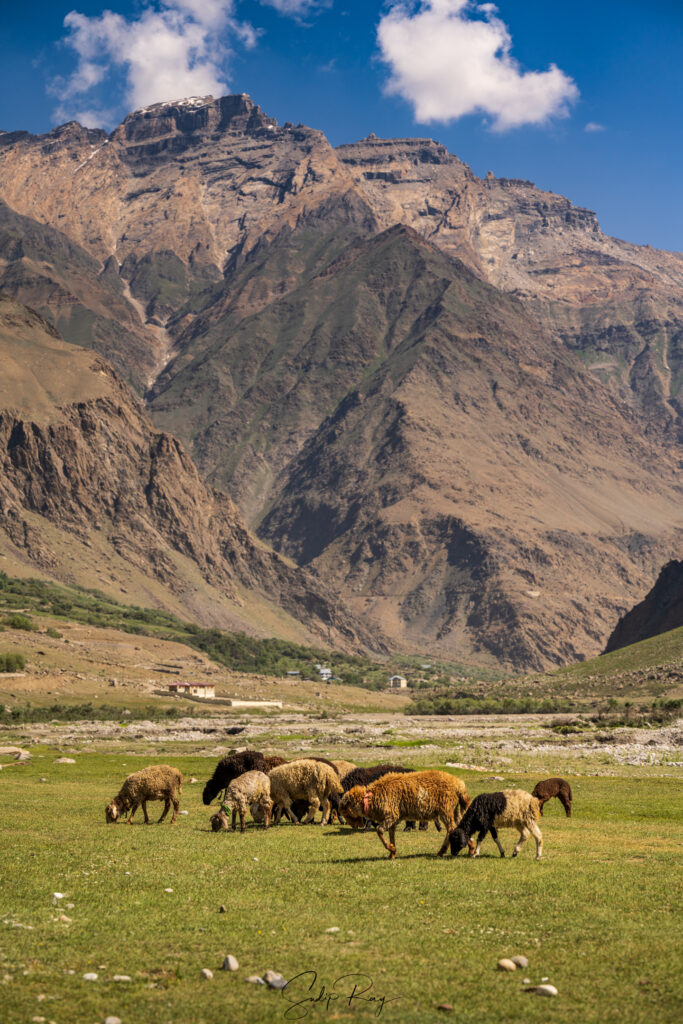
Places to visit in Suru Valley:
From thriving valleys in Sankoo to blooming pastures of Rangdum, Suru Valley has it all. Here, we have listed the places that you must visit in Suru Valley:
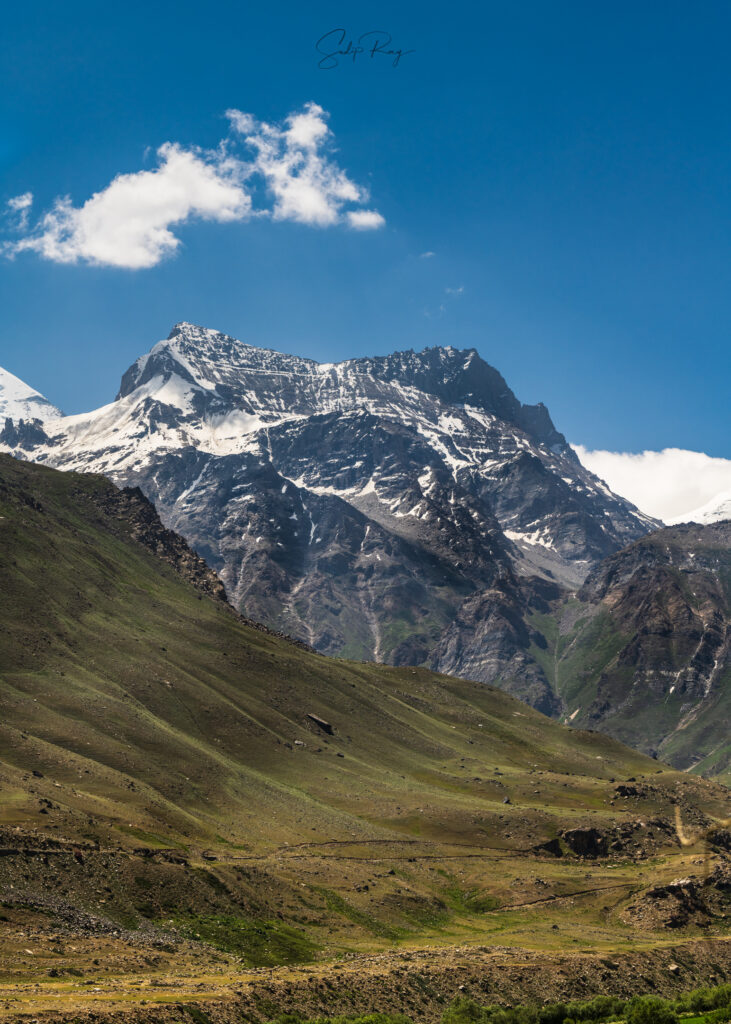
1. Sankoo:
Sankoo is the largest town of Suru Valley It is also one of the most beautiful places here. In Sankoo, the Suru river flows through rolling meadows, filled with thick vegetation and wildflowers. No wonder, Sankoo is often referred to as Ladakh’s Gulmarg.
Sankoo also serves as a base for the four days treks to Shargole via Rusilla and Sapi and three days trek to Drass via Umballa.
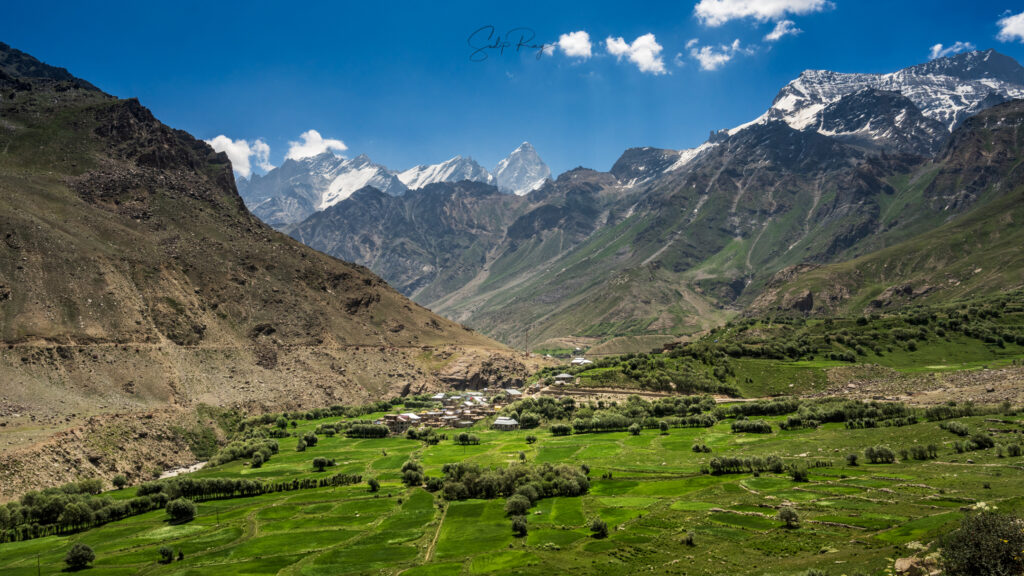
The beauty of Sankoo has been further enhanced by the colorful traditional houses and their flower and vegetable gardens.
2. Nun – Kun Massif:
The Nun – Kun massifs are surely the prime attraction of Suru Valley. Nun (7,135 m) and Kun (7,077 m) are two of the highest peaks of Ladakh. They stand next to each other, separated only by a 4 km snowy plateau. Interestingly, Nun peak remains covered in snow, while Kun is devoid of snow.
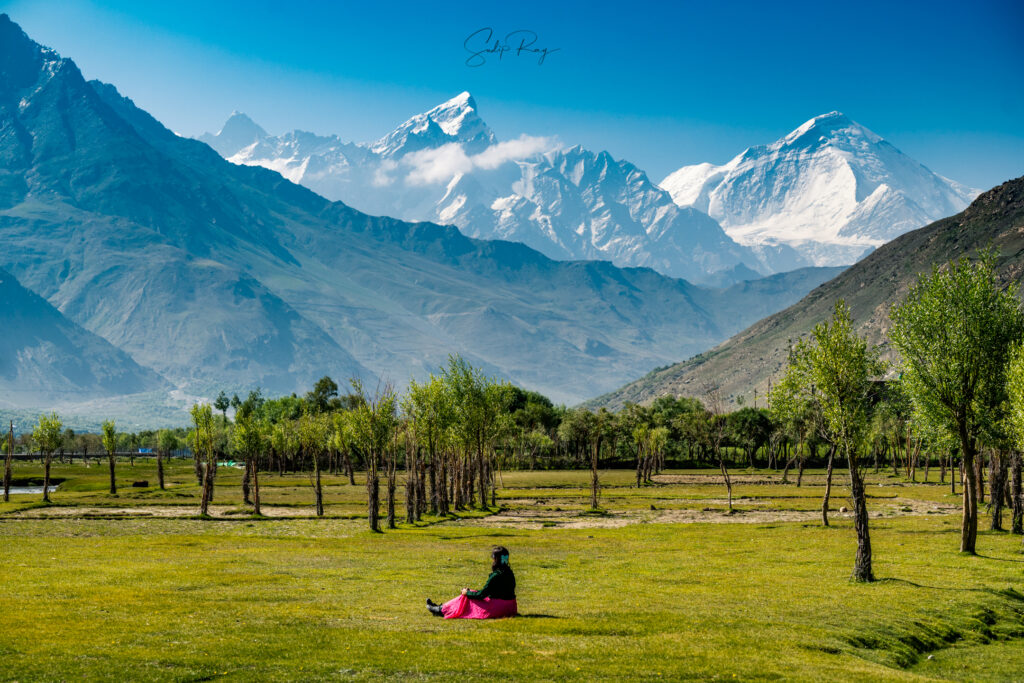
3. Kartse Khar:
This nondescript village has a 7-ft tall stone carving of Maitreya Buddha, which dates back to the 7th century.
4. Damsna:
Damsna is a pretty hamlet. The riverside here is a popular picnic spot for the locals. You can also camp by the river. Damsna provides gorgeous views of Nun-Kun massifs. If you are into astrophotography, don’t miss the opportunity to click the Milky Way above the twin peaks.

Damsna is also known for fishing and river rafting.
5. Panikhar:
This is another picturesque village of Suru Valley. Panikhar is renowned for providing the clearest view of the Nun-Kun peaks. A small village called Tangol near Panikhar acts as the base camp for the Nun-Kun expedition.
6. Parkachik:
The otherwise run-of-the-mill village is home to the well-known Parkachik glacier. The glacier treads slowly down the slope of Nun-Kun, thereby forming a huge 300-ft tall wall of a thick mass of ice. The Suru river is primarily fed by the melting of this ice wall.
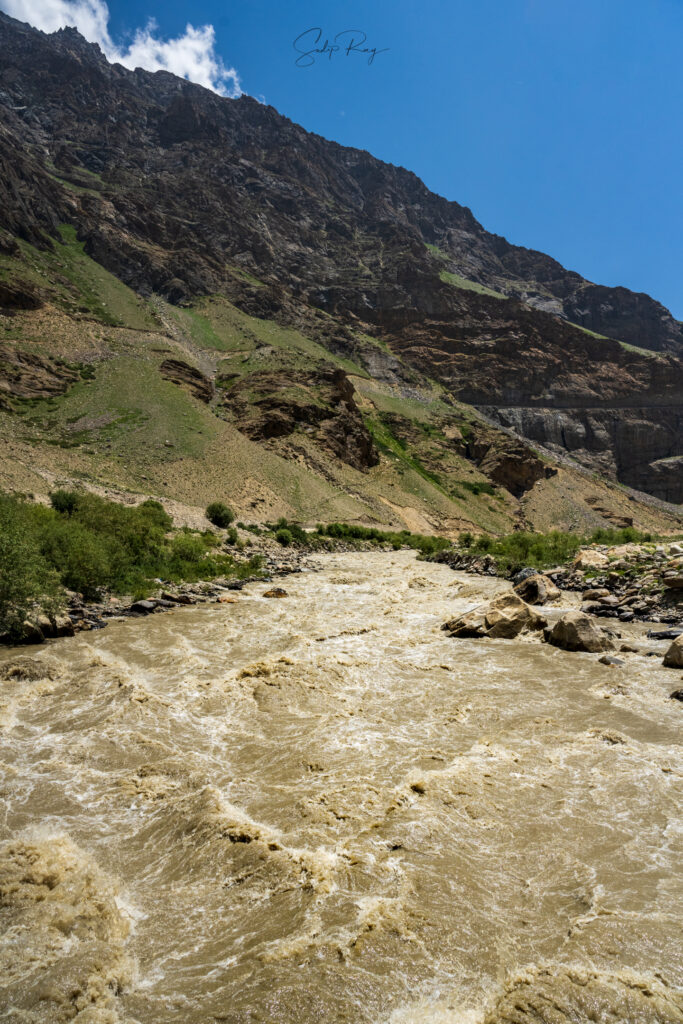
There is a rickety suspension bridge in Panikhar, which offers astounding views of the feral Suru river as also the Parkachik glacier.
7. Shafat Glacier:
The Shafat glacier lies on the other side of the Parkachik glacier. This 14 km long glacier also adds to the volume of the Suru river. Along with Parkachik glacier, the Shafat glacier provides a base ascending the summits of Nun-Kun.
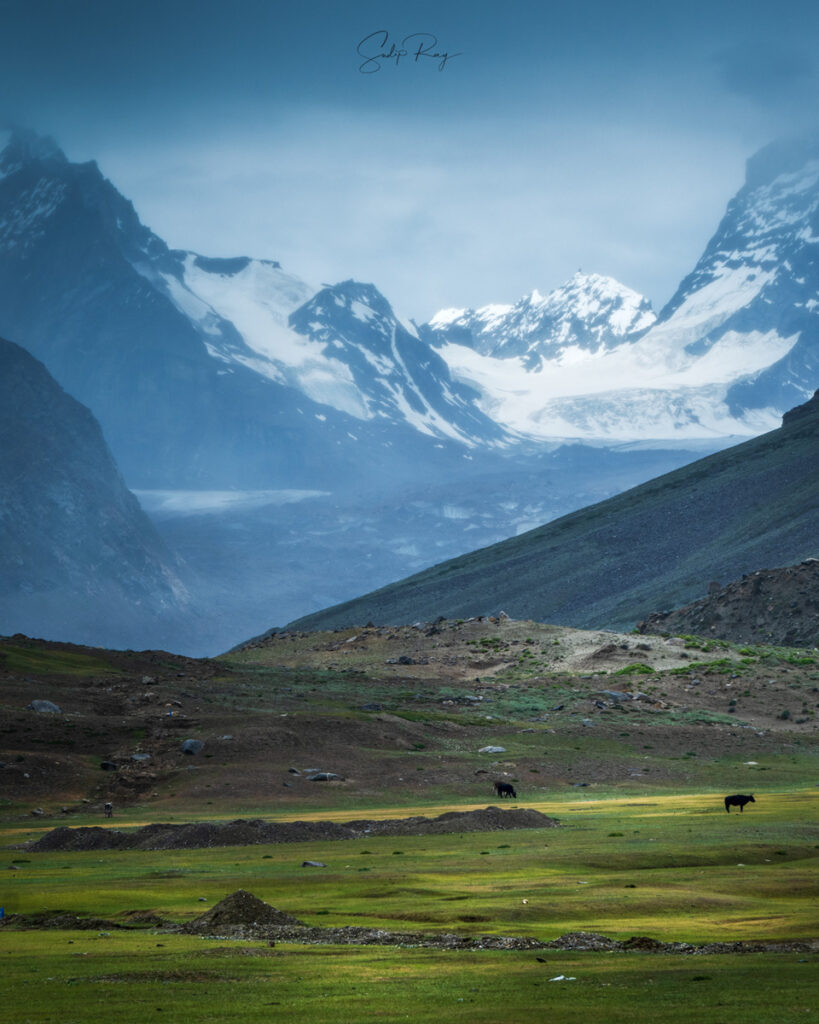
8. Rangdum:
Located midway between Kargil and Padum, Rangdum is the last inhabited village of Suru Valley. However, Rangdum resembles Zanskar both in terms of looks and ethos. This hamlet is famous for its fortress-like Buddhist gompa, which was built atop a steep hill some 200 years back. It is also noted for the nomadic Bakarwal tribe, who arrive every year in Rangdum along with their herds of sheep and goats.
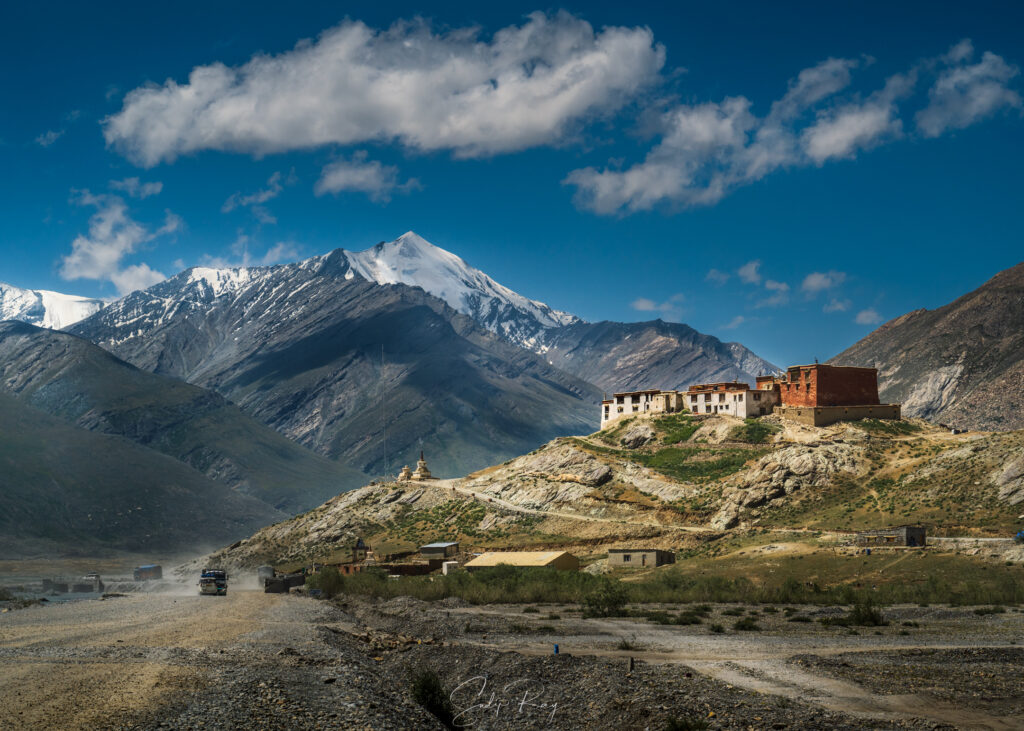
Rangdum will steal your heart at the first sight. The mountains that surround Rangdum look like masterpieces of Nature. Nature has skillfully brushed each fold of the mountain with individual colors. In the midst of these mighty ranges, there lie grass fields, dotted with countless flowers.
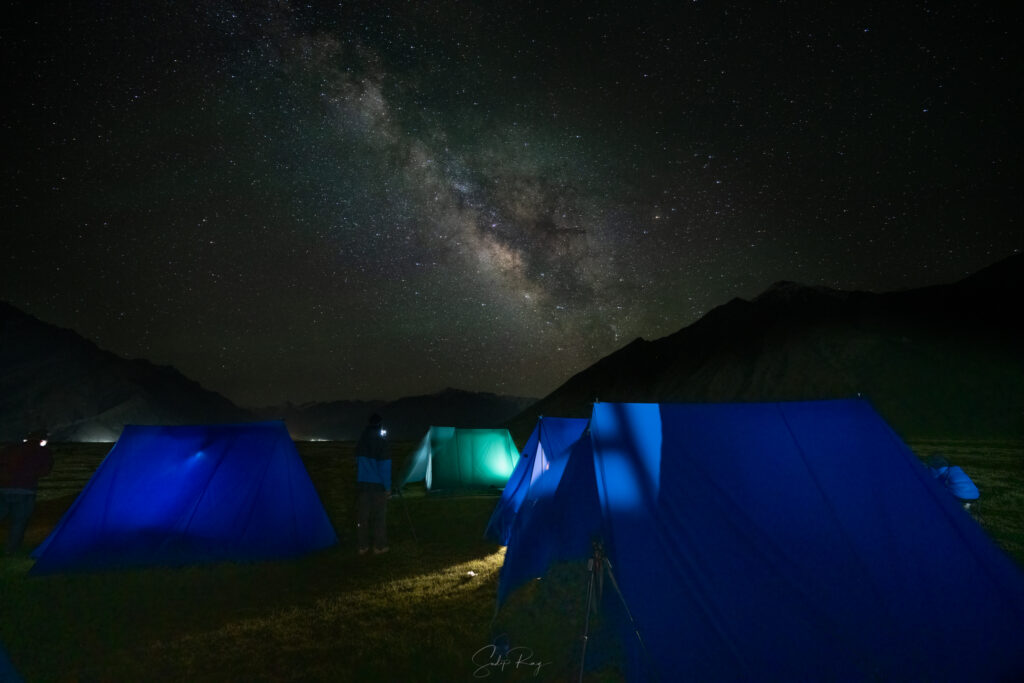
Where to stay in Suru Valley:
The accommodation available in Suru Valley is basic. You won’t find any luxurious options here.
- Guesthouse: Guesthouses are only found in Sankoo, such as the Goba Guest House.
- Homestays: Homestays are available everywhere in the valley, especially in Panikhar, Parkachik, and Rangdum.
- Campsites: You can set up camp for a unique experience at Damsna, Parkachik, and Rangdum.
- J&K Tourism Bungalow: There are J&K Tourism Bunglow at Sankoo, Panikhar, Parkachik and Rangdum. But we heard that they are not very reliable and remain mostly closed.
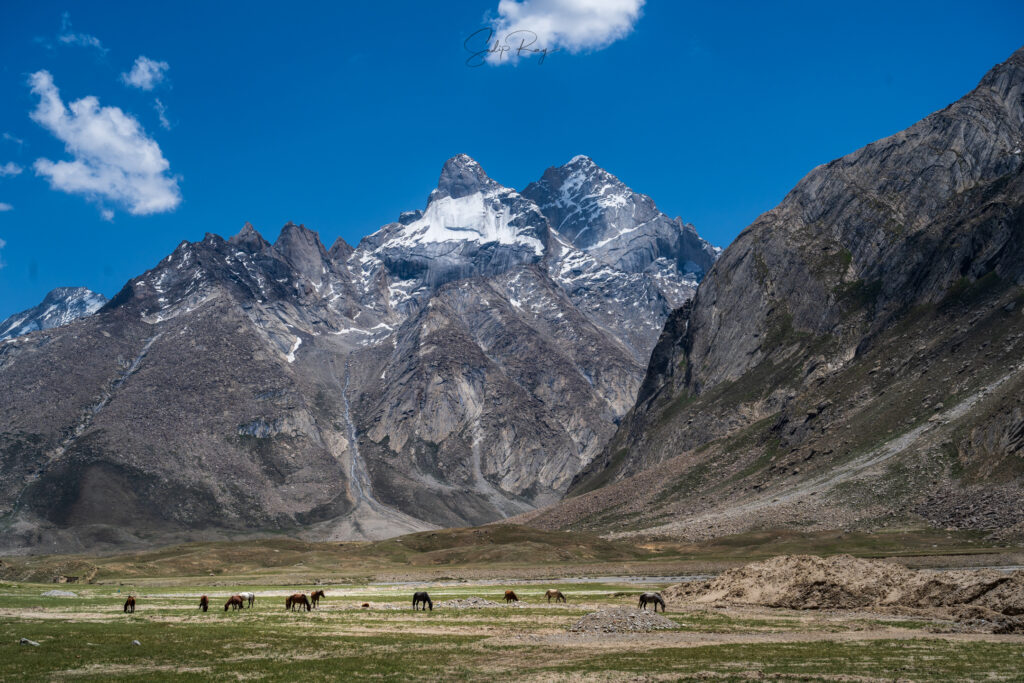
Things to know:
1. If you are visiting during the summer months, pack light sweaters, jackets, and windcheaters. However, you will need heavy woolen garments during winter.
2. Carry a good moisturizer, sunscreen (with at least SPF 50), Vaseline, and Boroline. Also, carry sunglasses and hats. Sun is pretty harsh during the day
3. You won’t find many eateries here. There are some basic restaurants in Sankoo. In other places, you will come across shops selling hot beverages and instant noodles. So, carry dry fruits, biscuits, cakes, and chocolates for the road.
4. Suru Valley is one of the remote areas in Ladakh. You will find hospitals only in Kargil. Kargil and Sankoo have few medical shops. It is best to carry basic medicines along with you.
5. Only the post-paid connection of Jio works almost everywhere in Suru Valley. We were told that the post-paid connections of Airtel and BSNL also work. But they didn’t.
6. There are ATMs only in Kargil and Sankoo. Also, all transactions are done in cash here. Therefore, carry sufficient cash with you.
7. You will find petrol pumps only in Kargil. We suggest filling your car to the fullest at Kargil and carrying spare fuel in a jerrycan in case of emergency.
8. The road in Suru Valley is excellent till Panikhar. Afterward, narrow dirt road starts, which will accompany you all throughout your journey in the entire Zanskar Valley.
9. You will find plenty of car mechanics at Kargil. If you are taking your own car or bike to Suru Valley, we suggest getting your vehicle serviced beforehand. Also, carry basic spare parts and a toolkit in case you face minimal breakdowns on your journey.
